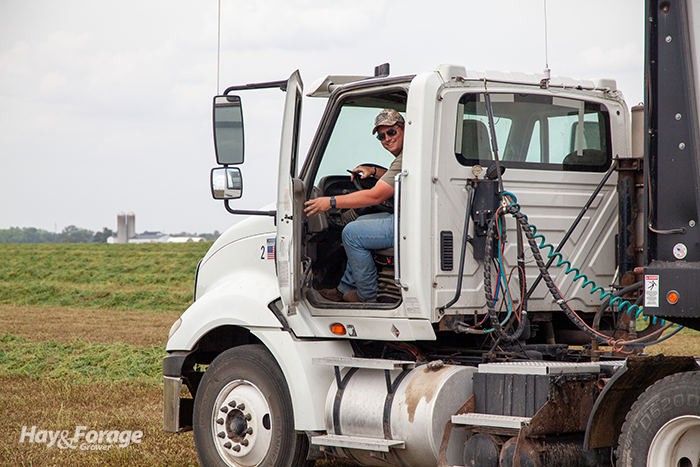
Traffic gets slower this time of year if your commute includes a county road in farm country. As we approach the busy season for corn silage, grain harvest, and later cuttings of alfalfa, both sides of the center line will have space taken up by choppers, combines, and pull-type machinery. This, and a flurry of field activity, calls attention to farm safety.
The idea to promote farm safety week across Hay & Forage Grower’s online channels was brought up the other day as we looked forward to next month’s agenda. National Farm Safety and Health Week is recognized every year during the third week of September. This year, it is Sept. 22 to 26.
It makes sense that this messaging comes right before fall harvest season in my region of the Midwest where many row-crop farmers will soon be operating their largest pieces of equipment, pulling silage wagons and grain carts down two-lane roads, and filling and emptying bins and silos as they store, market, and haul this year’s crops. But many row-crop farmers double as hay and forage growers, and hay and forage harvests occur all season long.
No farmer — regardless of their type of operation or harvest season— waits until the third week of September to start thinking about farm safety. They don’t because they can’t. The U.S. Bureau of Labor and Statistics indicates the agricultural sector is one of the most dangerous on a fatality rate per worker basis. With that said, National Farm Safety Week isn’t just intended to reach farmers — it encompasses family members, farm employees, and members of rural communities.
During my time as an ag journalist, I’ve been impressed by the safety protocols set in place by managers of many of the farms and custom harvesting businesses that I’ve visited. These protocols are more than verbal agreements or written rules, though. They are essentially worn like pieces of personal protective equipment and embodied in the way employees carry out their duties.
I’ve also seen safety protocols pushed aside in an attempt to save time, resources, or just due to a lack of awareness or understanding. Sometimes those actions — or lack of action — put the individual at risk. Other times, a whole team of people is in danger. And then there are farm accidents that are completely random.
It’s impossible to predict how clearly we will think or how quickly we will act if an emergency occurs. But best practices and safety protocols are critical to instill in anyone who lives or works on a farm. That was the goal for Keith and Ruthie Bolsen and their mission to establish and promote silage safety at a global scale. Their motto was simple: Bring everyone home safe.
The couple was memorialized for their contributions to the agricultural industry at the International Silage Conference in Gainesville, Fla., in July. Keith’s 32-year research and teaching tenure at Kansas State University centered around silage crop agronomy, silage additives and fermentation, cattle performance on silage-based diets, storage losses, and overall silage management. Toward the end of his career, his focus shifted toward silage safety, and he and Ruthie founded the Keith Bolsen Silage Safety Foundation in 2017.
The Bolsens advocated for awareness, training, and prevention strategies to reduce the incidence of fatal and life-altering silage accidents. They created a legacy that brings attention to the human cost of unsafe practices. No farm duty is worth a life. Read that sentence again.
There are people like Keith and Ruthie within the ag industry who promote farm safety, and then there are people on-farm who implement it. Earlier this summer, I visited a grass seed farm in Oregon during their harvest season and met one of their trusted combine drivers. Within minutes of meeting, the 17-year-old high school senior told me about the combine fire she was involved in last year.
She was harvesting clover seed when she smelled hot exhaust coming from her machine and her fight-or-flight instincts kicked in. She got out of the cab, called 911 and the farm manager, and then used a fire extinguisher to try and smother the smoke and flames like she learned to do in her farm safety training.
Luckily, the fire department showed up before any serious damage occurred, and she walked away unscathed. In fact, she was eager to join the combining crew again this year. But I could tell the incident burned a scar in her memory.
I recently read a story about a man who contended that farming is just a series of events gone wrong and a farmer’s ability to make them right. In a lot of ways, this is true. But I think the opposite can be said when it comes to farm safety — it is a farmer’s ability to do things right and mitigate a series of events gone wrong.
Farm safety is more than “what” we do. It’s about “why” we do it. And the heart of every practice, rule, or protocol is more or less the same: Bring everyone home safe.
